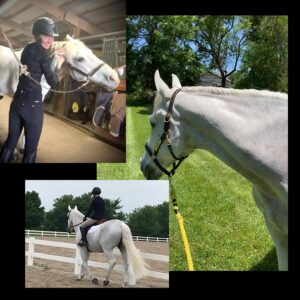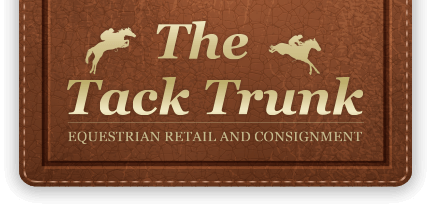
Grey horses are not any more likely to get dirty or stained than other colors of horses, they just show it off more! And often the products used to “clean and remove stains” can actually be part of the problem. Whitening shampoos are often very drying, causing the hair to become brittle and absorb stains, making them almost impossible to remove. Moisturized hair will repel stains and also keep the coat and hair healthier. A lot of shampoos are not PH balanced for equines, which can lead to skin irritations and other problems like leaving oily residues and can attract dust!
Product Check:
Avoid products with sodium chloride!
Check to make sure the product is ph balanced for horses!
Use shampoos and conditioners that contain vitamin E
Spot treat with an enzyme product such as Lucky Braids Whitener! This will instantly dissolve stains by breaking the bond between the hair and anything else (the stains). New stains soften up and can be wiped right off. When old stains are dry, wet hair with spray and let sit. When the enzyme dries on the horse’s coat, the stain is easily removed.
Pro tips:
Comb through clean tails when wet! This will help prevent breakage
Repetitive washing strips hair of its natural oils and makes it more susceptible to staining
Currying brings out a horse’s natural shine no matter what color their coat is
Take care when body clipping light coated horses, they are more susceptible to sunburn
Silicone sprays coat hair, not allowing it to breathe, and helps stains set into the coat
Curry a lot! Everywhere and before and after you ride. Currying not only acts like a gentle massage for your horse, it helps bring natural skin oils to the surface, which protects the hair from stains and breakage. I use the Glossy Groomer curry followed by The Tiger Tongue. The Tiger Tongue really does act like a cat’s tongue, pulling dead hair and skin from the horse and scrubbing away stains. You can use the Tiger Tongue wet or dry so it makes for a perfect bath sponge too! And don’t forget your horse’s legs! Curry them, it helps prevent skin crud build up and removes any arena dust and dirt, which can cause rubs.
Whisk dirt away and stimulate the muscles with a medium stiff brush. Too stiff of a bristle can make a horse overly sensitive to grooming and doesn’t properly flick dirt away from their skin and fur. I use a medium stiff brush everywhere but the face. Natural bristle brushes are my favorite and clean better than plastic bristle brushes and they last a long time! Worth the extra money! Pro tip – brushes accumulate dust and dirt during the grooming process, I clean off the bristles frequently with a curry comb!
Brush out the mane (and tail if you are a tail brusher – I am). I use a human hair paddle brush because they last longer and are more gentle. For the tails, I gently hand pick any knots or shavings out first. Next I separate the tail into sections and carefully brush out the strands. If the tail is kept properly moisturized, it is easy to keep it tangle-free.
The next two steps are the finishing touches for the body of the horse. I use a soft brush with longer bristles to polish the coat and a soft fleece mitt or a towel to really put a nice shine on the hair.
For brushing the horse’s face, I use a very soft curry comb and/or The Tiger Tongue. Currying the face helps remove dead skin and dried sweat. Next I brush out the forelock and whisk away any dirt with a soft bristle brush. I wipe out the ears, the nostrils and around the eyes with a soft cloth!
Some people pick their horse’s feet in their stalls before they begin the grooming process and that is great but I like to clean their hooves in the barn aisle where there is better light. Cleaning the hooves is a great time to check over the general health of them and to watch for any signs of thrush or other foot problems. I always check my horse’s shoes to make sure they are tight, not sprung or spun or loose. And I always check their hooves after I ride too! My favorite hoof pick is a sturdy metal one and I use a separate brush to clean the bulbs of the heel and the remove any loose dirt and shavings.

